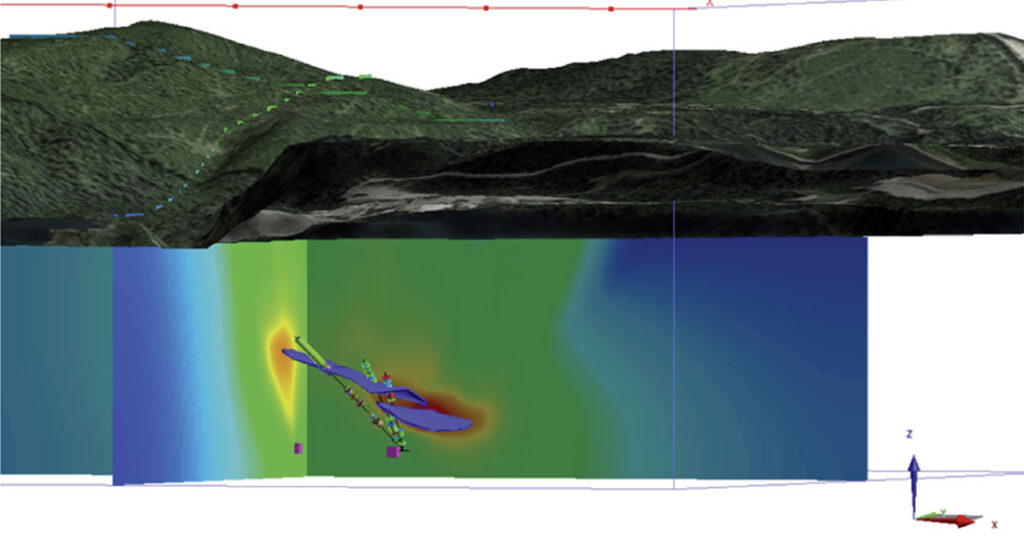
Imaging a Mississippi Valley-Type Deposit with Muon Tomography
Blind test of muon tomography, successfully imaging an MVT deposit at ~500 m depth.

Pend Oreille Mine
PROJECT
Washington State, USA
LOCATION
Gallery
IDEON DETECTOR
Polymetallic Mississippi Valley-type
DEPOSIT TYPE
BACKGROUND
The Pend Oreille mine is located in northeastern Washington, USA. The MX700 deposit at about 450 m below surface is a polymetallic Mississippi Valley-type (MVT) deposit containing primarily lead and zinc, with a large density contrast to the surrounding dolomite. The ore body had been well-drilled and its wealth of geological data would provide a good blind test for muon tomography.
The muon tomography survey was blind, meaning no information about the existence of the MX700 deposit — nor any of its properties — were revealed until the survey was completed.
IDEON SOLUTION
Four muon detectors locations were selected by the mine operator at depths of ~490 m, providing good views for 3D imaging. Two muon detectors were positioned at two locations each, operating for 68–153 days at each location. The volume of rock interrogated by a single muon detector was very large. First a blind test was performed; then the geological model was refined using a combination of the muon tomography data and 5% of the available drill data.
OUTCOME
The blinded muon tomography survey indicated the presence of a high-density anomaly. Results were subsequently provided to Teck Resources and compared to their own model of the deposit, informing the presence of an actual deposit. After incorporating drill data from five drill holes with the muon tomography data in a joint inversion, a compact density model compared very well with the known ore shell.

Easting and Northing slices through the 3D density model from muon data, compared to the ore shell model of the deposit in the Pend Oreille survey. The underground drill holes used in the joint inversion
